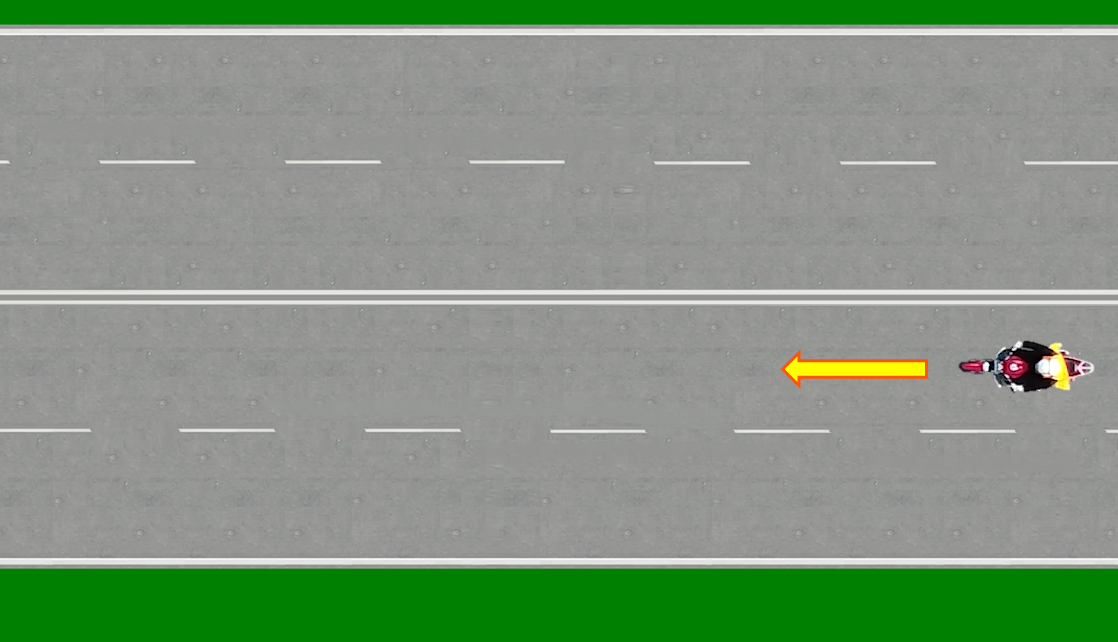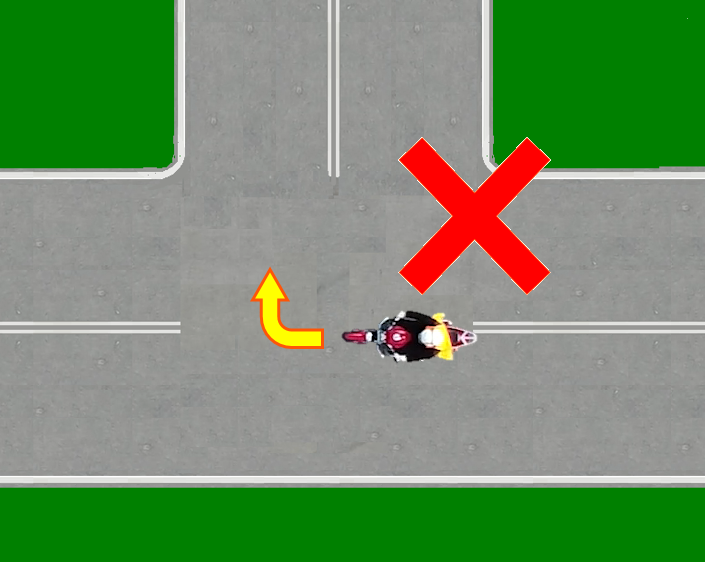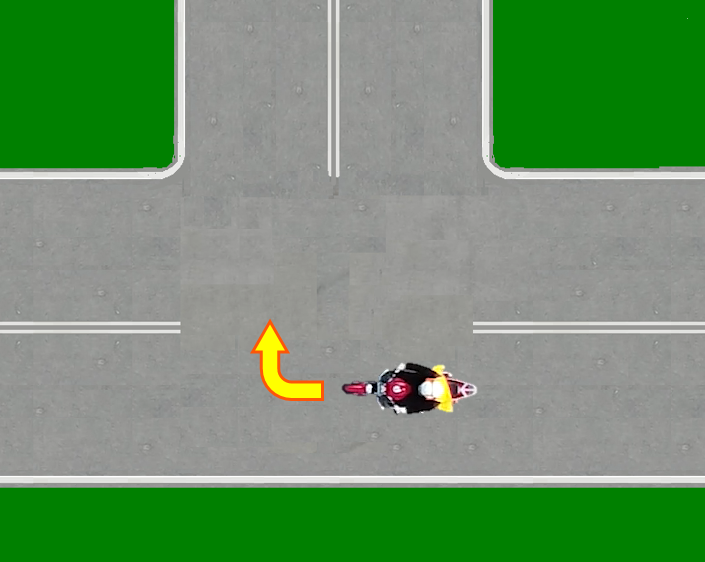motorcycleoperatorskillstest.com.au
THE PRE PROVISIONAL COURSE
Frequently, and not-so frequently, asked questions on The pre-provisional course
Reading time for average person
(2 minutes)
Reading time for those who love detail and who will read all the information, including things that you will hear on the day anyway
(9 minutes)
- What is the basic outline of the course?
- Arrive
- Briefing
- Bike check
- Slow Speed work
- Introduction to practical roadcraft
- Class session on roadcraft
- Practical road ride assessment
- Lunch
- Skills test practise
- Briefing for test and assessment on an successive individual basis (each does the whole test one at a time)
- Can i fail the pre provisional course?
Yes.
-
How?
One way, and usually the most common, is by demonstrating that you cannot ride a motorcycle. Not wanting to sound too harsh here but the typical wording used is: 'demonstrating a gross inability to operate a motorcycle' That just means you need more practise. It could mean you shouldn't be riding at all, as in (smiley face) 'maybe riding is not for you.' It's best to get that checked with an instructor as it might be 'not for you' but could also be a collection of bad habits that simply needs to be undone to make you free to ride the motorbike safely and comfortably.
-
If i fail the M.O.S.T, do i fail the pre-provisional course?
No.
-
Yeah, but isn't the MOST part of the pre-provisional course?
YEAAAAAHHH, NAHHH. Yes and No. YEs in one sense and no in another. If it were strictly part of the course then anyone who failed the skills test would need to resit the entire 8 hour pre provisional course in order to take the skills test. Since people need only resit the test, the MOST is not part of the course. However, it is part of the course in that you practically do it on the same day.
I am sure that has provided definite confusion
-
Yes I am confused. How does that work?
For it to be possible to fail the course without necessarily failing the skills test, there must be other criteria on which the pre provisional course is assessed and satisfied.
-
What are those assessable criteria?
As above, (i) an inability to ride demonstrated at any part of the day and (ii) failure to satisfactorily complete the road ride component. The former means you are simply not ready, and the latter although possible is quite difficult. You would almost have to be deliberately obstinate, but hey i am sure its been done. The road ride has less focus on can you operate a motorcycle in terms of skills but rather it has more focus on whether you can observe and respond to hazards, maintain distance between vehicles travelling in the same direction, vary your road position according to changing conditions.
- So the people who join us at the end of the day for the test are people who have failed?
OOOOHHHH i would recommend be careful. Unless you enjoy awkward moments when you walk up to one of them asking: "How did you fail last time?", only to get the response, no i am 'Converting my licence'
(awkward pause)
- What do i do then?
Hhaha Sorry no idea.
- OK seriously can you tell me a bit more about the road ride.
Yes, we can, but if you are the type of person who loves to get as much information as possible beforehand then even if i recommend to stop reading now and just listen on the day, you would probably still want to read this anyway. For all who are not. Stop reading now and go and practise.
You're still here aren't you. Come on go and practise. I promise, everything written below, will be mentioned on the day of the course.
You are still here aren't you: OK fine.Without a doubt this saying is the most important part of riding safely:
"The best way out of a dangerous situation, is not to enter into it"Now since you are reading this you are also the type of person to recognise that there is something wrong with that quote. I know. i am working on it. But if you can pre-empt and prepare in order to avoid dangerous situations you will not have any incidents at all.
THe road ride will test whether you can
- maintain distance between vehicles travelling in the same direction,
- observe and respond to hazards,
- vary your road position according to changing road conditions.
I will proceed to give some quick examples of the above
The first is easy, stay 3 seconds from the car in front. For everything else keep reading.....(you are still here aren't you?)
CASE 1:
You are on a main road and a car comes in a side street:

Give a nice obvious head turn (so the instructor can see), cover the brakes (trigger your brake light - (so the instructor can see)) and move away from the vehicle (so the instructor can see)
I hope you can see a theme here. DO NOT just DO These things in your MIND without demonstrating that you are doing it hahahahahah
CASE 2:
You are on a single lane main road with no parked cars on your left and no oncoming traffic.

Stay in the middle of the road
CASE 3:
As above but now there is are parked cars on the left
Move to the right hand side of your lane

CASE 4:
As above with NO parked cars and now oncoming taffic is coming towards you.
Move to the left hand side of the road
CASE 5:
As above with parked cars and oncoming taffic.
Move to the middle of your lane. You need enough distance from a parked car in the case of doors opening and enough buffer from oncoming taffic.

You could also travel at a slightly slower speed.
CASE 6:
You are on a single lane road approaching a CREST. I am tempted to say if you dont know what a crest is you can.....repeat the knowledge test but i won't.
If you cannot see oncoming traffic because of the CREST move to the left hand side of the lane
CASE 7:
Might as well throw in a tricky one. You are approaching a set of red traffic lights and you are the first vehicle. What do you do? Test yourself here. This might be not obvious
The answer is you need to stop with a car space length between you and the stop line and wait until the vehicles behind have stopped. When they provide a buffer for you, you can move forward. By provide a buffer we mean they, being stopped, are a sufficient barrier to you getting hit from the rear. The space you are leaving is in the case that no one stops in time behind you you can move forward into that space. Remember to be in the ready position when stopped so that you can move off quickly again if you need to in an emergency. The general take away with this one, is to know who is behind you and adjust accordingly, this leads into the next case
CASE 8:
What about another trickier one?
Actually this one might not be mentioned on the day but it is a really good one to remember.
You are turning right at a T-junction onto the T part :) OK i will put a picture to accompany that utterly poor description. Does the picture confirm what you had in mind?
In this case, you need to combine road positioning with buffer space and checking behind you.
Does the picture confirm what you had in mind?
In this case, you need to combine road positioning with buffer space and checking behind you.
AVOID: Sitting as close as possible to the Right hand side. This will tempt cars to go around you putting them dangerously close and cars following them may not see you and that is a disaster. Stay in the middle of your lane to buffer both from oncoming traffic and prevent people going around you. Combine this with always looking behind to see if people are stopping OR on a two lane road, they are able to swing into the other lane. If someome is not stopping you must be ready to take off straight ahead to allevaite/avoid a serious collision.

CASE 9:
Someone is following close behind you?
This can be difficult because the answer is you need to have more room in front of you. This is to cater for the effect of reaction time with the lack of sufficient buffer from behind. To give yourself more space usually involves slowing down, which is very possibly going to be percevied by the driver behind that you are deliberately trying to antagonise them. The alternative is to be pressured and pushed along, this mi ght be ok whilst there are no obstacles, especially with other vehicles around you are the one entering into dangerous. Try and let them pass if possible, but maintain your buffer in front so that if you have to react suddenly and brake hard, so that they do not run into you.
CASE 10:
I see a Gap! I reckon i can make it!!

Nah bro.
You should stop, yes. Furthermore, leave the car length buffer as per the stop line. Further still, be careful of drivers behind you, as being now out of the normal traffic line, drivers behind may not see you if you stop too far to the left.
On that last point, drivers are used to stopping with things in front of them, not off to the side. Drivers have the normal habit of judging their stopping position based on what is in front of them, without taking into account a bike off the normal driving line.
-
Why should i let the instructor see?
Because they have to assess you and it is prudent to make it obvious enough, so you don't have to argue and claim: "I looked with my eyes" hahahah. Just make it easier on yourself.
Now before you ask.... 'if I dont turn my head...' (ITS NOT A FAIL). Just make sure you activate the brake lights. Well, unless you want to argue both that "I looked with my eyes" and "I had my fingers ready by the brakes not setup."
Why?
It is better to Do them and make it obvious.